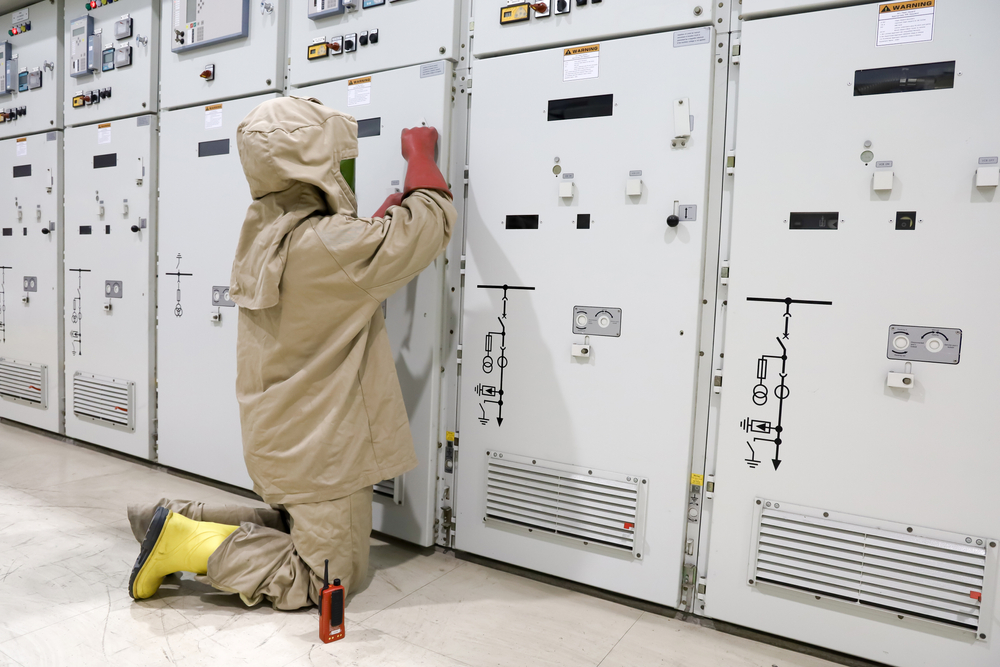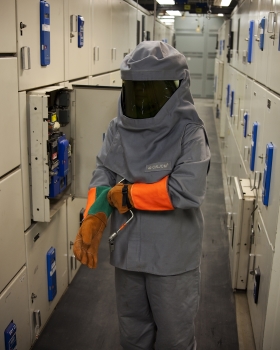Personal Protective Equipment for Arc Flash Hazards
Electricity can be dangerous; this is a fact that we all know. Why don’t we always treat it as such? Is it because we are far too familiar with it? Do we become complacent, believing that we are safe from electrical incidents because we’ve never had one before? Perhaps this is the case. This is an answer we may never truly know. When we take the time to think about the potential for injuries associated with electricity, we need to remind ourselves that only a split-second lapse in judgment or one small factor that is out of our control can be the difference between life and death.
Develop A Comprehensive Safety Program
It should be clear that we need an electrical safety program to protect workers against arc flash hazards, and other risks caused by working with electricity. An effective electrical safety program can include specific written procedures and employee training to make sure those procedures are followed consistently. The first step in those procedures must be de-energizing the equipment that the employee is working with since an arc flash cannot happen if there is no electricity present. This is the safest way to work with any type of electrical equipment.
However, there are some occasions where it is not possible or feasible to de-energize equipment. Such situations include times when de-energizing the equipment would cause additional hazards. For example, when medical equipment in a hospital that is keeping a person alive develops a fault and needs to be repaired. If the power were to be disconnected, that person would likely die. Infeasible situations are ones where it is nearly impossible to disconnect the power, such as shutting down or disconnecting a permanent power source from the main utility line. Other times would be when diagnostics or testing needs to be done while the system is energized for troubleshooting purposes. Remember that the key is infeasible, and not inconvenient.
 Protecting Workers From Arc Flash Hazards In Energized Equipment
Protecting Workers From Arc Flash Hazards In Energized Equipment
Protecting workers is the priority. When working on energized electrical equipment, an arc flash incident can happen with life changing, even fatal repercussions for the worker. Therefore, proper safety precautions must be laid out in specific detail in the procedures, and followed at all times. In addition to the arc flash analysis and establishing arc flash boundaries, employees need to be protected with the proper personal protective equipment (PPE).
PPE will be based on the arc flash rating of the equipment, which will determine its arc flash PPE category. All categories include some form of eye and face protection, hearing protection, gloves, and arc-rated clothing.
Gloves will be either leather or rubber insulating gloves depending on the voltage. If rubber gloves are required, leather protectors should be worn over them. They need to be rated for the maximum voltage that a worker could be exposed to when working on the equipment. They come in 6 classes, from 00 to 4, and each class has its own color. As the class number increases, the gloves protect against higher voltages but also become bulkier, and less suited for fine manipulation.
Arc-rated clothing will be dependent on the arc-flash PPE category, which will be determined in the arc-flash assessment. All arc-rated clothing is fire-resistant, but not all fire-resistant clothing is arc-rated. Only arc-rated clothing should be used. The type of clothing required ranges from long-sleeved shirts and pants to coveralls and hoods.
Include PPE Requirements & Training
PPE is another critical topic to cover in detail in a comprehensive electrical safety program. Beyond providing the arc-rated PPE, employers must also train their employees to use and properly care for their PPE. Training also needs to include the dangers of wearing conductive jewelry, clothing, or electronics, making sure that employees understand that these cannot be worn when working on energized equipment. Employees must also be trained to never wear under layers made of fibers that can melt, which is common in most synthetic fabrics. Even wearing the arc-rated outer layers, the heat generated from an arc flash can make these fabrics melt to the employee’s skin, leading to severe second and third degree burns.
Electrical Safety Procedures & Training
Developing a complete electrical safety program to prevent arc flash hazards and other dangers begins with a careful analysis of your current procedures and practices. Once shortcomings and non-compliance issues are identified, the solutions come from outlining detailed procedures, training managers and employees on those procedures, and inspecting the workplace on a regular basis to ensure those procedures are implemented correctly and consistently. Amerisafe Group can help your company develop, implement, and manage an electrical safety program that is both effective and cost-effective.


 Protecting Workers From Arc Flash Hazards In Energized Equipment
Protecting Workers From Arc Flash Hazards In Energized Equipment





